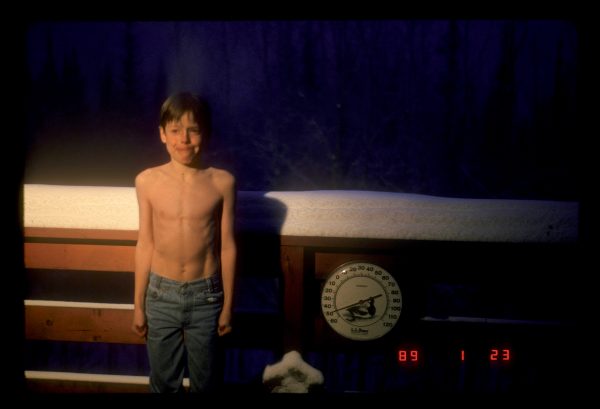Fuzzy memories of great Alaska cold snap
January 31, 2019
Ned Rozell
907-474-7468

This week marks 30 years since I turned my pickup left onto a North Pole road and noticed the clutch pedal did not return to my foot. In a panic, I reached down with my mittened hand and pulled. The frozen plunger oozed back into position.
Driving at minus 50 degrees Fahrenheit is not a smart thing to do. But I was in my mid-20s and had a firefighting class to attend on Badger Road. That location, fuzzy with ice fog, was dark-side-of-the-moon cold during the last time Alaska had a genuine statewide cold snap — one that lasted 14 days.
Late January 1989 featured a low temperature of minus 76 degrees Fahrenheit in the village of Tanana. That’s just four degrees off Alaska’s (and America’s) all-time low of 80 below zero, recorded at Prospect Creek on Jan. 23, 1971.
Those are old numbers, but Brian Brettschneider, @Climatologist49, recently tweeted that when today’s wind-chill formula is applied, McGrath residents on Jan. 27, 1989, experienced a world-record windchill for a place in which humans live: 100 degrees below zero.

Few cars were clunking down the McGrath streets on that day, when the whole state was locked up with the coldest temperatures some people have ever felt. For six straight days, thermometers in Fairbanks did not read warmer than minus 40. Anchorage hit 30 below, Homer minus 24 and even Juneau went subzero, at minus 3.
The cold endured for a few weeks because of an unusual combination of several high-pressure systems piled atop one another. It started when an expanding ridge from Siberia shoved polar air over the body of Alaska. The mass of cold air molecules was so large that warmer air from the Gulf of Alaska could not budge it.
Then, a second dome of frigid air from the North Slope rolled in and squatted on the first. The impressive weight of those air molecules pressing on the Earth resulted in the highest barometric pressure reading ever recorded in North America, at Northway: 31.85 inches of mercury.
The cold festered. Thermometers in Tanana, McGrath, Ambler, Aniak, Farewell Lake, Galena and Manley Hot Springs all registered 70 below zero or colder on Jan. 27, 1989.
Since that winter, a few Alaska places have dropped to minus 70 — Chicken, O’Brien Creek and an automated weather station near Kaltag in January 1999 and Chicken again in February 2008 — but you can count those events on one hand. And, despite driving through many winters in this very cold place, I have not had to yank my clutch pedal from the floor since 1989.
Alaska still has the basic ingredients for an extended cold spell: A white ground surface that reflects warmth from the sun, and the winter tilt of the planet that limits that solar input to near zero.
But given the steadily rising yearly average temperatures in Alaska, and the dwindling sea-ice extent on the northern ocean that is a refrigerator of the world, could the 1989 cold snap ever happen again?
“I think it’s possible,” said Rick Thoman, climatologist for the University of Alaska Fairbanks' International Arctic Research Center and living encyclopedia on northern weather. “But it’s less likely than in the 20th century.”
Since the late 1970s, the University of Alaska Fairbanks' Geophysical Institute has provided this column free in cooperation with the UAF research community. Ned Rozell is a science writer for the Geophysical Institute.


